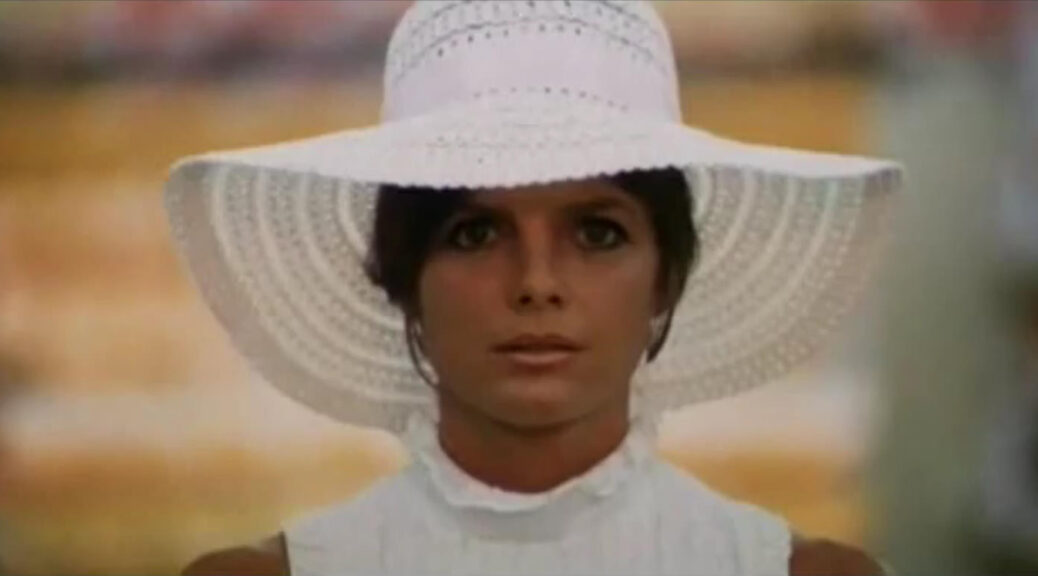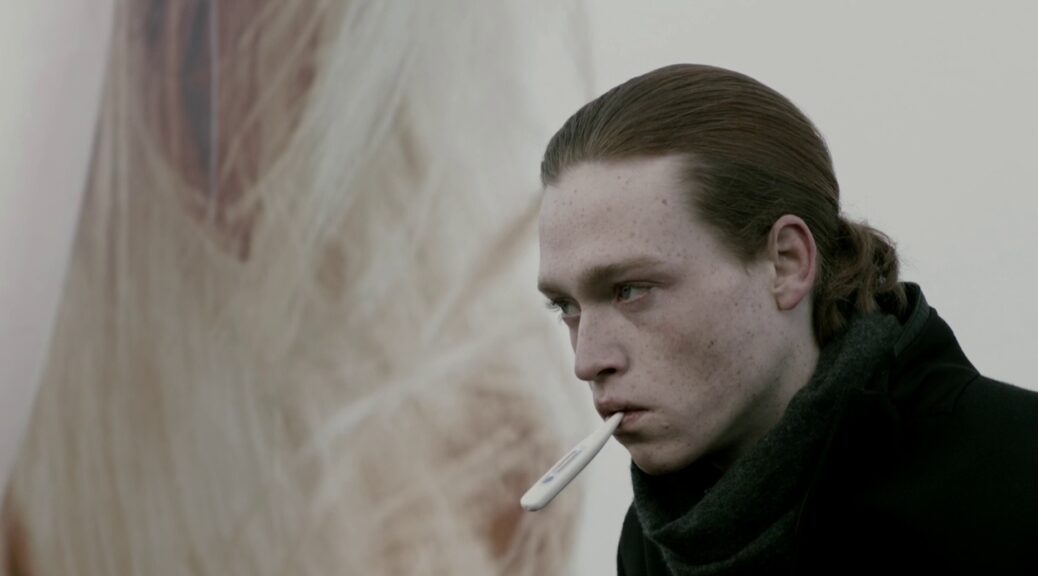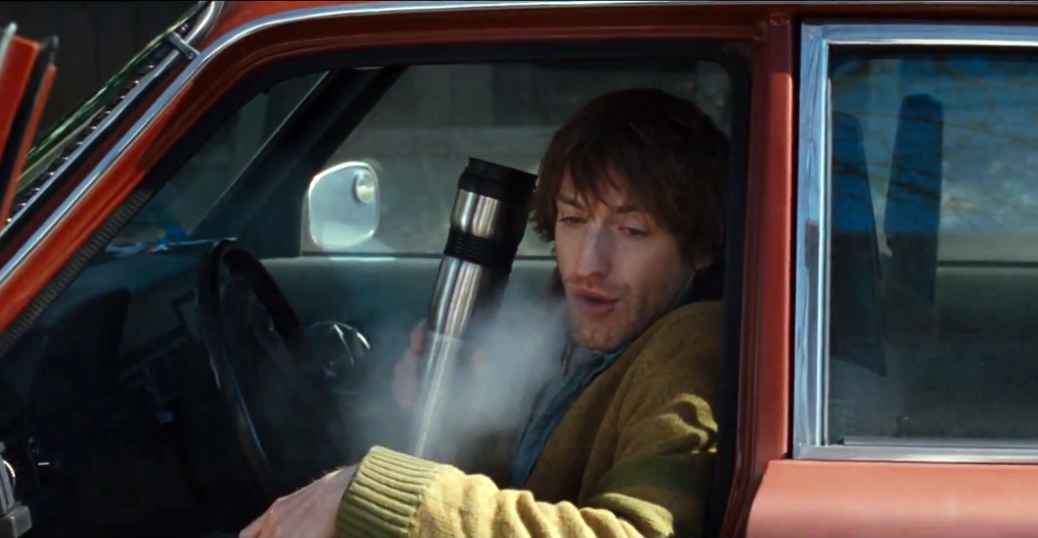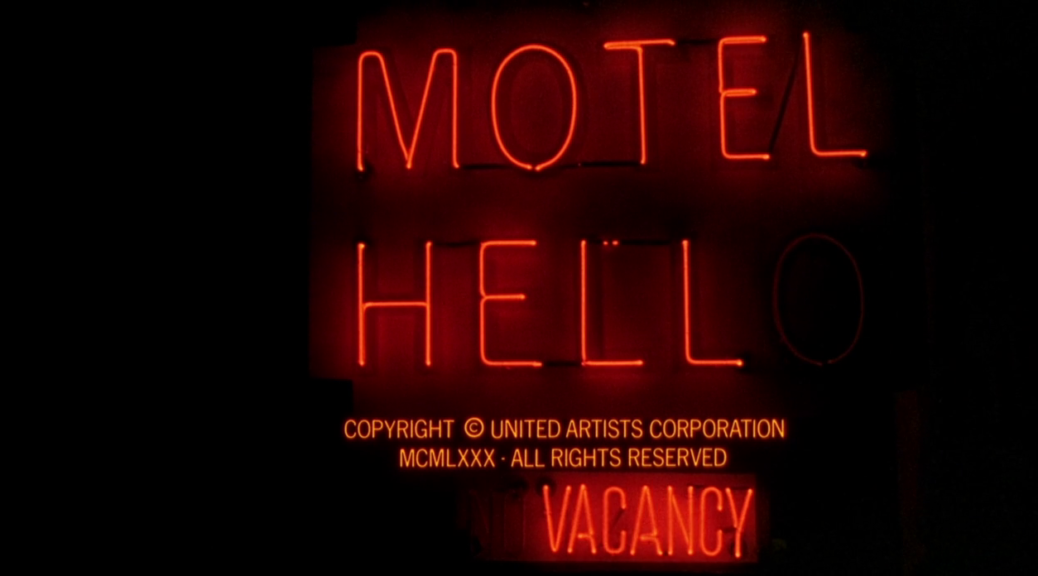How can it be that we’re more than 250 episodes in and we’ve never done a podcast on Dario Argento? Well, we’d like to thank the Wexner Center for the Arts for inspiring this episode. We will introduce one of the films in their upcoming Dario Argento series, as will our podcast guest Scott Woods. But first, we’ll get together and hash out our personal favorites.
5. Inferno (1980)
The second of Argento’s Mother Trilogy, Inferno orbits Mater Tenebrarum, the Mother of Darkness. She lives in a foul smelling but phantasmagorically constructed building in New York City, where Rose Elliott believes something diabolical is afoot.
A sequel to the filmmaker’s most lauded work, Suspiria, Inferno mirrors the stagey quality of the first in the trilogy. The architecture, the color scheme, the dizzying nature of the building itself give the film the surreal quality of a spell. This one takes on a neon soaked nighttime aesthetic that’s hypnotic. The opening underwater sequence is among Argento’s best set pieces.
Per usual, the Argento’s plot takes a backseat to the experience. A couple of these murders are especially grisly – appropriate, given that Mater Tenebrarum is the cruelest of the sisters.
4. Cat o’Nine Tails (1971)
Argento’s second feature delivers perhaps the most strictly giallo of his films, in that (before Argento reinvented the genre) a giallo is a mystery thriller. In this one, a blind former newspaperman (Carl Malden) teams up with a sighted but far less savvy newspaperman to figure out why so many murders are connected to the Terzi Institute.
Items that will become standards for the filmmaker: don’t trust what you see, science is a fun underpinning to a mystery no matter how ludicrous that science is, Hitchcock is cool – plus, the extreme close up eye balls and murderer POV that would become trademarks.
Surprises that he drops after this movie? Not only does one character deliver an insightful piece of feminism – “Whore equals liar equals murderer, perfect Italian logic!” – but the film actually murders more men than women.
Its color palette is a bit of a let down and it drags in parts, but it delivers a number of excellent set pieces and it’s really fun to see Carl Malden in an Italian horror movie.
3. The Bird with the Crystal Plumage (1970)
Argento’s first and arguably one of his best opens with a bang. Frustrated writer Sam Dalmas (Tony Musante) is killing time before he finally returns home to the States from Italy. But he witnesses an attack through the massive glass storefront of an art gallery.
It’s such a gorgeous frame for violence, and a perfect introduction to the maestro of sumptuous slaughter. There’s childhood trauma (the sort that turns a person toward mania), which will go on to become a go-to in the filmmaker’s arsenal. But what an introduction to his style!
2. Suspiria (1977)
American ballerina Suzy Bannion (Jessica Harper) moves to Germany to join a dance academy, but the other dancers are catty and the school staff are freaks. Plus, women keep disappearing and dying.
As Suzy undertakes an investigation of sorts, she discovers that the school is a front for a coven of witches. Suspiria is a twisted fairy tale of sorts, Argento saturating every image with detail and deep colors, oversized arches and doorways that dwarf the actors. Even the bizarre dubbing Argento favored in his earlier films works beautifully to feed the film’s effectively surreal quality.
It’s a gorgeous nightmare, bloody and grotesque but disturbingly appealing both visually and aurally (thanks to the second scoring effort by Goblin).
1. Deep Red (1975)
Maybe not the most traditional choice for Argento’s best, but it’s such a powerful step in his overall collection. He made three straight up gialli – The Bird with the Crystal Plumage, Cat o’Nine Tails, and Four Flies on Grey Velvet – before taking a break from the genre with a dark historical comedy.
And then, Deep Red – a giallo, to be sure, but one that predicts the entirely surreal, aesthetic-over-plot supernatural thrillers he’d make next. Deep Red is gorgeous and bizarre, full of red herrings, childhood trauma, traumatizing children, tormented lizards as well as a number of themes he’s hit on since his first film.
David Hemmings (Marcus Daly) saw a murder, but he can’t be sure what exactly he saw. He’s sure if he can just remember it clearly, it’ll all make sense. This is a preoccupation of most of Argento’s films, but he’s never more curious than he is here. And the bloody, almost exquisite murders are more excessive and interesting here than in anything else he made.









